nginx 快速使用
前端人员nginx快速使用
1.下载安装
下载地址: http://nginx.org/en/download.html
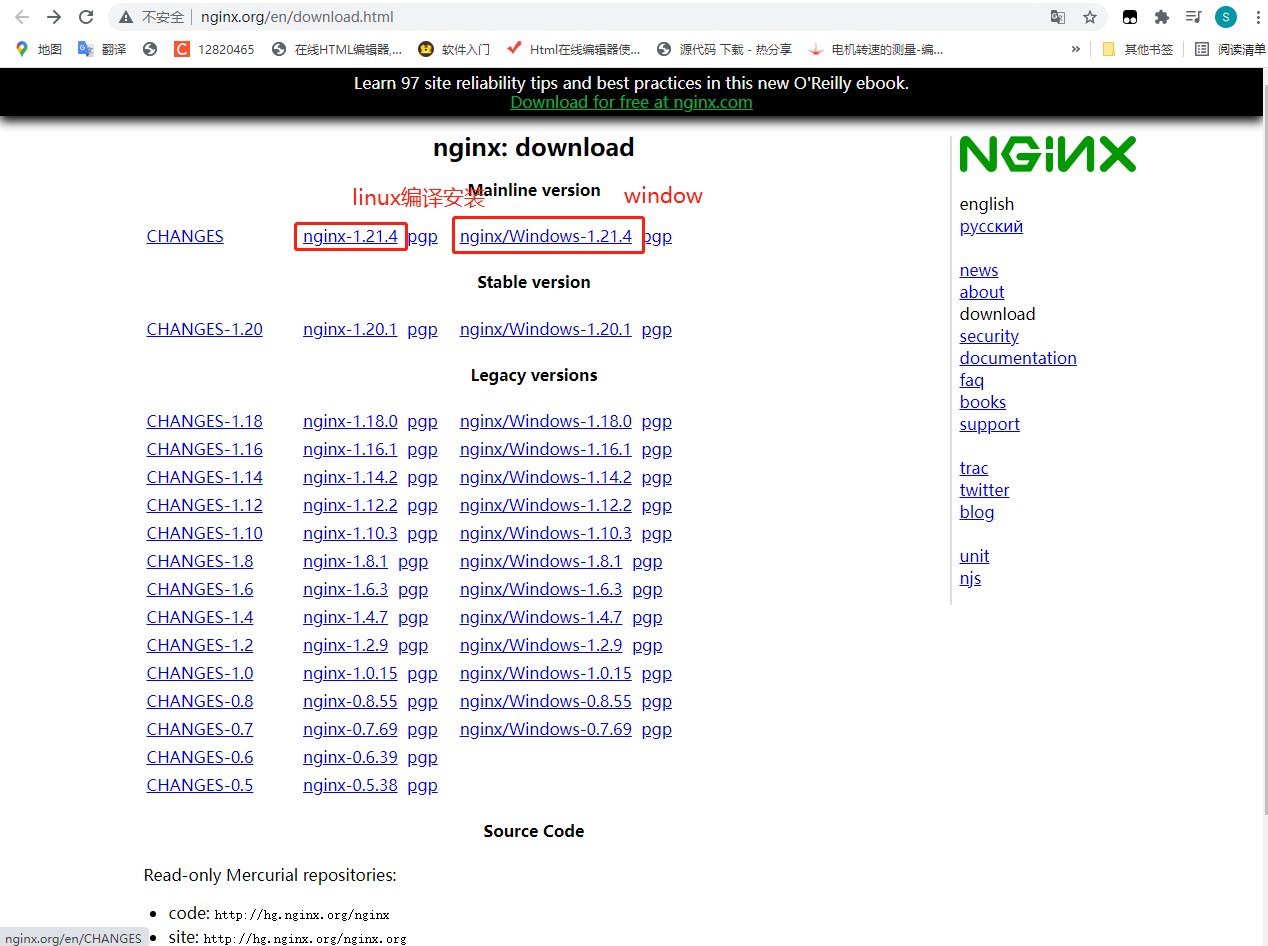
2.解压
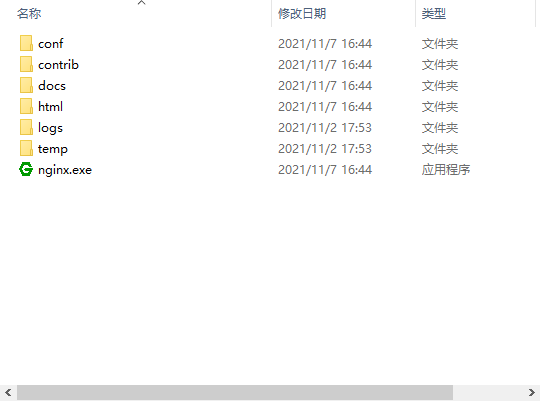
简单说明下文件的作用
conf 存放默认配置文件,在make install后,会拷贝到安装目录中去 contrib 存放一些实用工具,如geo配置生成工具(geo2nginx.pl) html 存放默认的网页文件,在make install后,会拷贝到安装目录中去 docs 文档 logs 日志 temp 临时文件
所以说在前端简单使用的时候只要关注html文件夹就好
如果还要配置其他就关注配置文件conf
其他的暂时还没用上
3.启动nginx
建议在cnd下启动因为如果可以看到报错信息
在未配置环境变量的情况下要在当前目录打开cmd
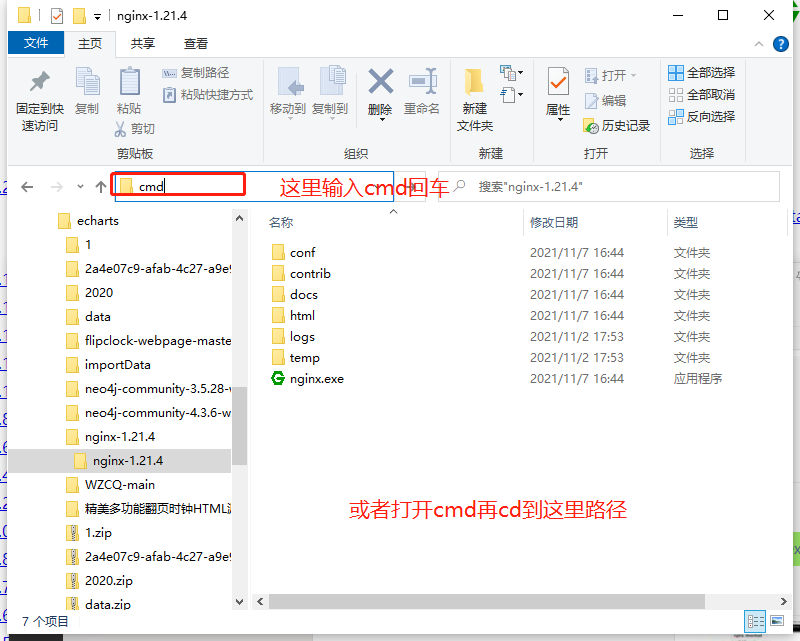
在cmd里面输入 nginx 回车

在没有报错情况下到浏览器里面打开http://127.0.0.1/会出现下界面
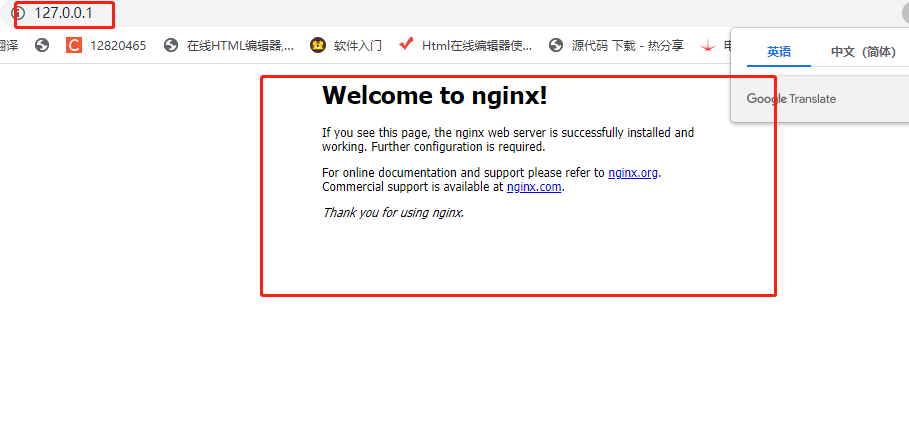
表示已经成功运行
4.前端代码的替代
前端代码在html里面
因为nginx默认配置好路径和端口所以只要把前端代码放在html里面就能访问了
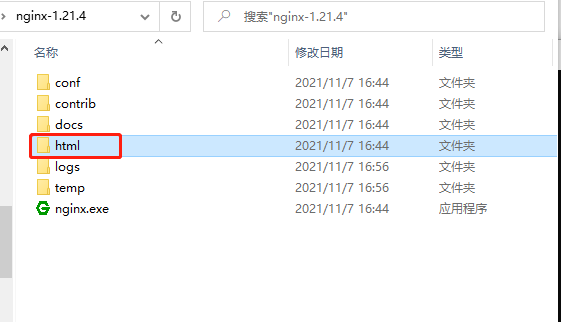
里面有index.html和50x.html可以删掉放自己的前端代码也可以留着

把写的前端代码放进来

前端代码架构
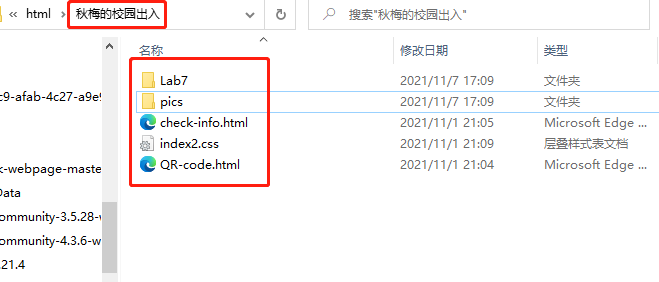
代码完整路径D:\LHQ\echarts\nginx-1.21.4\nginx-1.21.4\html\秋梅的校园出入\QR-code.html
如果关掉nginx就重新开启,没有的话就直接在浏览器输入http://127.0.0.1/秋梅的校园出入/QR-code.html
访问网址就是 ip+相对html的路劲
如果部署在服务器的话其他人也能访问了

就这样前端的代码就可以部署在服务器了
nginx服务器可以配置很多东西,我的博客,直播服务器、反向代理、物联网服务器 等都是用nginx
以后再讲其他动态配置
5.进一步讲下配置文件conf
nginx.conf文件
#user nobody;#启动用户配置在部署服务器可能有权限的问题
worker_processes 1;这是 Nginx 服务器并发处理服务的关键配置,worker_processes 值越大,可以支持的并发处理量也越多,但是会受到硬件、软件等设备的制约
#日志文件
#error_log logs/error.log;
#error_log logs/error.log notice;
#error_log logs/error.log info;
#pid logs/nginx.pid;
events {
worker_connections 1024;
}
#events 块涉及的指令主要影响 Nginx 服务器与用户的网络连接,常用的设置包括是否开启对多 work process 下的网络连接进行序列化,是否允许同时接收多个网络连接,选取哪种事件驱动模型来处理连接请求,每个 word process 可以同时支持的最大连接数等。
上述例子就表示每个 work process 支持的最大连接数为 1024.
这部分的配置对 Nginx 的性能影响较大,在实际中应该灵活配置。
#http 块
http {
include mime.types;
default_type application/octet-stream;
#log_format main '$remote_addr - $remote_user [$time_local] "$request" '
# '$status $body_bytes_sent "$http_referer" '
# '"$http_user_agent" "$http_x_forwarded_for"';
#access_log logs/access.log main;
sendfile on;
#tcp_nopush on;
#keepalive_timeout 0;
keepalive_timeout 65;
#gzip on;
#server 块 每个 http 块可以包括多个 server 块,而每个 server 块就相当于一个虚拟主机。
#而每个 server 块也分为全局 server 块,以及可以同时包含多个 locaton 块。
server {
listen 80;#端口
server_name localhost;#主机地址
#charset koi8-r;
#access_log logs/host.access.log main;
location / {
root html;#路径
index index.html index.htm;
}
#error_page 404 /404.html;
# redirect server error pages to the static page /50x.html
#
error_page 500 502 503 504 /50x.html;
location = /50x.html {
root html;
}
# proxy the PHP scripts to Apache listening on 127.0.0.1:80
#
#location ~ \.php$ {
# proxy_pass http://127.0.0.1;
#}
# pass the PHP scripts to FastCGI server listening on 127.0.0.1:9000
#
#location ~ \.php$ {
# root html;
# fastcgi_pass 127.0.0.1:9000;
# fastcgi_index index.php;
# fastcgi_param SCRIPT_FILENAME /scripts$fastcgi_script_name;
# include fastcgi_params;
#}
# deny access to .htaccess files, if Apache's document root
# concurs with nginx's one
#
#location ~ /\.ht {
# deny all;
#}
}
# another virtual host using mix of IP-, name-, and port-based configuration
#
#server {
# listen 8000;
# listen somename:8080;
# server_name somename alias another.alias;
# location / {
# root html;
# index index.html index.htm;
# }
#}
# HTTPS server
#
#server {
# listen 443 ssl;
# server_name localhost;
# ssl_certificate cert.pem;
# ssl_certificate_key cert.key;
# ssl_session_cache shared:SSL:1m;
# ssl_session_timeout 5m;
# ssl_ciphers HIGH:!aNULL:!MD5;
# ssl_prefer_server_ciphers on;
# location / {
# root html;
# index index.html index.htm;
# }
#}
}








